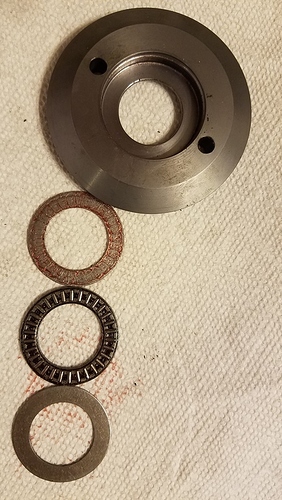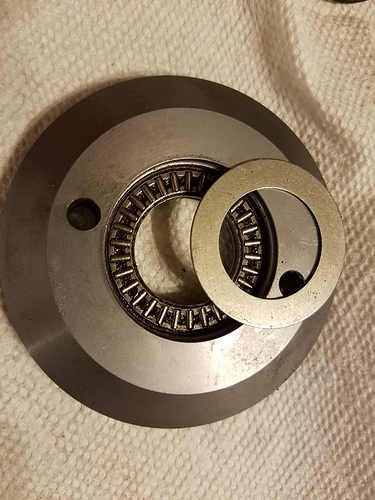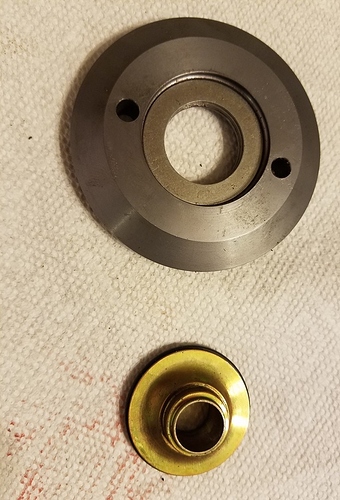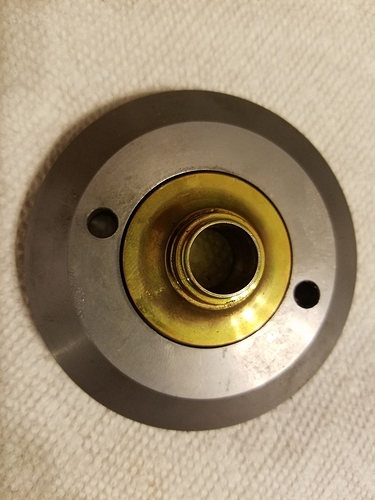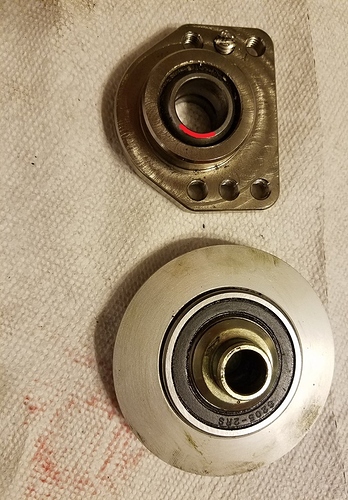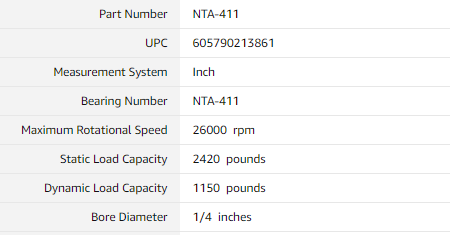This pic shows the GC bearing design. It’s a pair of hardened washers with some exposed needle bearings inside.
This pic shows how the bearings go into the GC tophat.
This pic shows the GC weight bearing insert that rides on top of the bearings. It has a rubber ring around it to help keep dust out of the bearings.
This pic shows the GC weight bearing piece in place.
Vorshlag. This pic shows the spring tophat on the bottom. Note the large sealed bearing.
I didn’t pull the sealed bearing apart and I don’t have enough experience with bearings to conclusively state that the sealed bearing approach is by definition a better then the not-so-sealed needle bearings. But the diameter of the Vorshlag bearing is about 15% more than the GC bearing and if I had to choose between a sealed design and not sealed, I’d choose sealed.
Win Vorshlag. Larger bearing, better seal for bearings.
This isn’t necessarily a hit on GC. Afaik, the cheaper GC camber plate is good enough.



